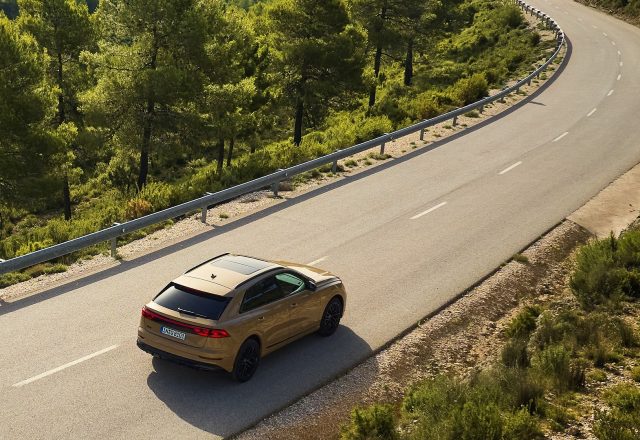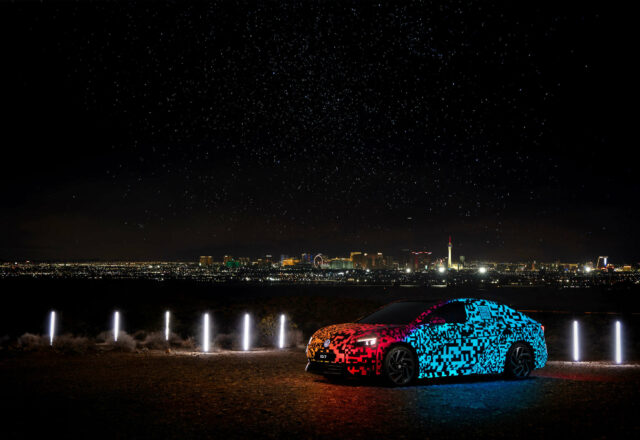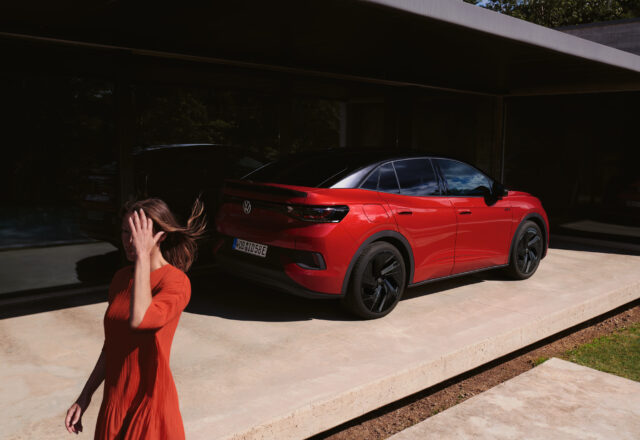Škoda has hit the mark with its first electric model: the Enyaq SUV is currently the most registered electric vehicle in Germany. The brand is pursuing ambitious plans up until 2026 and is launching six new, fully electric models. In an interview, Škoda Key Accounts Coordinator Luboš Vnenk explains how the expanded portfolio also opens up new prospects for fleets.
Mr. Vnenk, what global strategies is Škoda pursuing in the international key account segment?
Škoda has always been synonymous with value for money. Our cars offer outstanding space, craftmanship and, most of all, safety. These values alongside the targeted fleet offerings are the reason our brand is so successful in the fleet segment.¹⁾ From the business relations point of view, we want to be close to our customers, building a long-lasting partnership with open and clear communication. The situation has not been easy over the last few years, but supporting each other will be key.
How do you assess future development for Škoda in the markets?
Well, Škoda is generally a well-established brand in Europe. For instance, in Germany, we are the top importer, and in our homeland of the Czech Republic, we have a market share of more than one third of new car sales. We want to scale this success in new markets such as Vietnam.
How does your fleet offering differentiate itself from that of the competition?
I think the main distinguisher is the product itself. We offer various cars that meet even the most demanding fleet needs. Our portfolio is wide, and you can have it all – from a small “pool” vehicle to the sales rep’s car to the CEO’s limousine.
Our customers can buy or finance Škoda cars for a reasonable price to get the promised value for money. In the eyes of the fleet manager, we are attractive from the total cost of ownership perspective, where residual value plays a major role, and we are known for tailor-made offerings including after-sales and financing products.
Last but not least, Škoda is also known for its Simply Clever features, little things that make your day easier. I personally love the in-door umbrella and bag hooks in the boot that enable me to bring shopping home safely.

What differentiates your electric vehicles from those of your competitors?
Attractive design is a hallmark of our electric vehicle and we pay special attention to aesthetics, which is evident in every detail. We believe that the combination of modern design and quality craftsmanship provides our customers with a unique driving experience.
Another factor is the range. Our electric vehicle offers a higher range than most other models. This is a result of our continuous efforts in battery technology to drive efficiency innovations.
Lastly, reliability is paramount for our vehicles. The long-standing tradition of our brand in the automotive industry is a key element in maintaining the trust of our customers. A significant advantage of our brand is our extensive service network, meaning our customers can rely on quality and professional care for their vehicles worldwide.
Range and charging time are still cited as arguments against electric vehicles – rightly so?
Some customers are still concerned, but once they experience them, their overall perspective usually changes.
Range and charging time are no longer pain points. Our Enyaq produces solid results, and we continue to work on extending the range and reducing the charging time for future models.
On the contrary, what drivers appreciate about electric vehicles is not only acceleration, but more the aspects that every driver seeks, such as robust design and the associated feeling of safety. Fleet managers are happy with a lower total cost of ownership coupled with favourable operating and service costs. The advantage is amplified especially when customers have their own, well-run charging infrastructure.
How will the electrification of fleets develop in the most important markets?
The electrification of fleets is a dynamic process influenced by various factors across different markets. Western Europe is leading the trend, while other regions are catching up at varying speeds, influenced by economic and political climates. Companies are increasingly electrifying their fleets to meet environmental, social, and governance (ESG) goals, making it a strategic imperative.
What support do you offer for the implementation of electric mobility in existing fleets?
Within the scope of electromobility, we offer a wide range of products and services. For instance, we can help companies install wallboxes, we can offer charging cards and of course flawless service support.
As part of our efforts to educate people in electromobility, we offer a consulting service, cost calculators and cost structure comparisons between ICE and EV models. Every dealership has a dedicated and well-trained staff member for electric cars who can help clients understand whether electromobility is something that would suit their fleet.
“Our overriding goal and company vision is to help people live smarter, and we do it by being ‘simply clever’.”
Luboš Vnenk
Key Accounts Coordinator, Škoda Auto a.s.
Do you offer special leasing or financing models for international fleets?
Yes, indeed we do. We offer several leasing or financing options through our colleagues at VWFS as well as a tailor-made electromobility programme for international fleet customers called: Electrification-as-a-Service.
Some competitors are currently using discount campaigns to secure or gain market share. Are you planning something similar?
We are eager to always offer more than is expected, and it does pay off. It’s not only about the initial discounts for us. We try to build a loyal customer base, and to keep our customers satisfied, we need to give them good reason to stay with us, such as product and network quality, affordability, and availability. Our overriding goal and company vision is to help people live smarter, and we do it by being ‘simply clever’.
Without sustainable mobility solutions in the portfolio, it is becoming increasingly difficult for vehicle manufacturers on the market. What is Škoda’s roadmap for the future?
Škoda is fully immersed in the electrification journey, with plans to introduce six new electric vehicles by 2026. This aggressive push towards electric mobility showcases our dedication to reducing carbon footprints and contributing to a more sustainable future. These new electric models are not just vehicles; they represent a step forward in innovation and a commitment to environmentally friendly transportation.
In addition to our focus on electric vehicles, Škoda is investing in the enhancement of existing internal combustion engine models. Facelifts for the Scala, Kamiq, and future Octavia demonstrate our commitment to continuous improvement and staying at the forefront of design and technology trends. These updates aim to give customers a fresher, more modern driving experience.
Furthermore, sustainability extends beyond electric vehicles. The new generations of the Superb and Kodiaq models contain hybrid powertrains, combining electric and conventional engines. This hybrid technology represents a pragmatic approach, offering fuel efficiency and reduced emissions while maintaining the performance and versatility that Škoda is known for.
What is your personal assessment: is the era of the combustion engine coming to an end?
For the time being, we will experience the best of both worlds. Skoda will further improve conventional models to reduce emissions and will introduce new electric cars at the same time. I saw them all at the “classified prototype” stage and was super excited so please do stay tuned – there is more to come!
“We are living in the most turbulent, but in a way, exciting times in the automotive industry!”
Luboš Vnenk
Key Accounts Coordinator, Škoda Auto a.s.
¹⁾Škoda is the second best-selling brand in Europe (EU18) in the True Fleet channel according to dataforce.
Status: 19.12.2023
© Volkswagen AG










